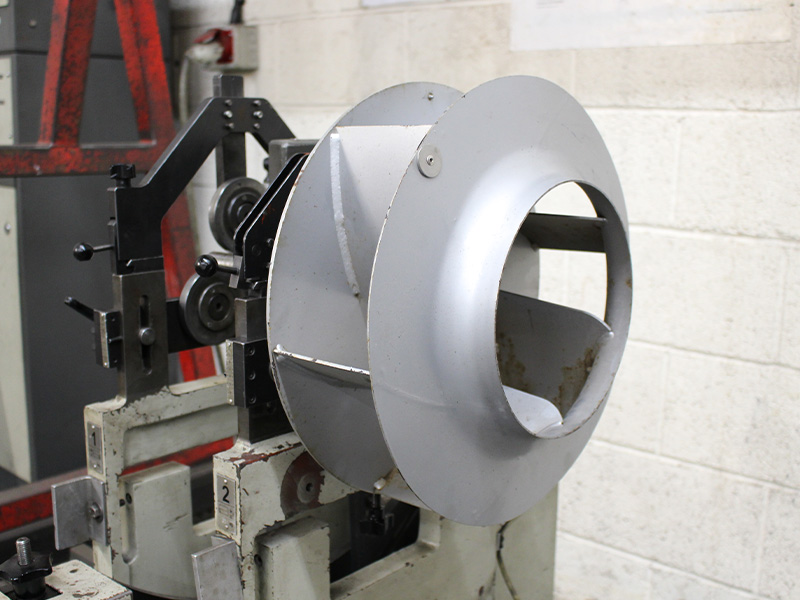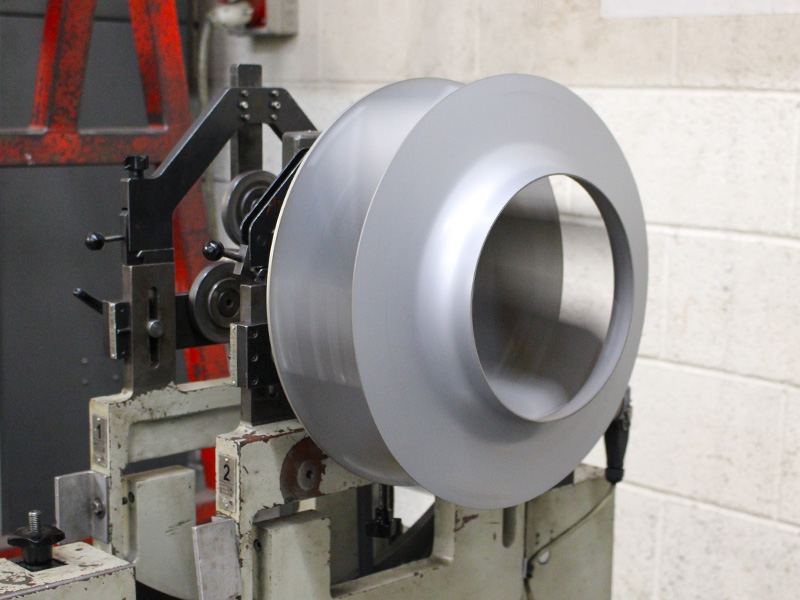
Dynamic balancing corrects imbalance while the rotor or fan is spinning. During rotation, sensors measure vibration in two planes and calculate the amount and position of correction needed. The goal is simple. Make the resultant forces and moments on the bearings as small as possible at operating speed so the rotor runs smoothly and efficiently.


Dynamic balancing plays a vital role in the performance and longevity of motors and fans. When a rotating component is not properly balanced, it can generate excessive vibration, which over time leads to wear and damage in critical parts such as bearings and shafts. This vibration not only shortens the lifespan of the equipment but also increases the likelihood of costly repairs or replacements. Moreover, imbalanced systems tend to produce higher levels of noise and heat (both clear indicators of energy being wasted). By ensuring proper balance, motors and fans operate more smoothly and quietly, leading to improved energy efficiency and reduced operational costs. In the long term, dynamic balancing contributes to extending the service life of equipment, enhancing overall system reliability, and significantly reducing the risk of unplanned downtime caused by premature mechanical failures. For businesses and facilities that rely on consistent, efficient performance, investing in dynamic balancing is a proactive step towards maintaining productivity and minimising maintenance issues.
Static balancing is a fundamental process that ensures the centre of gravity of a rotor is aligned with its axis of rotation. Unlike dynamic balancing, this check is carried out while the part is at rest. If the component tends to rotate on its own until a particular point consistently settles at the bottom, it indicates an imbalance—specifically, that the bottom side is heavier and requires correction. Static balancing addresses this by making adjustments in a single plane, which is generally sufficient for simpler components or applications where the equipment operates at relatively low speeds and dynamic forces are minimal. This method is most effective for parts such as pulleys, flywheels, small blowers, and other components that do not experience significant dynamic stresses during operation. While it may not be suitable for high-speed machinery, static balancing remains a reliable and cost-effective solution for ensuring smoother operation and reducing wear in basic rotating equipment.
Balancing is a key factor in protecting your investment in rotating equipment by enhancing performance, reliability, and efficiency. One of the primary benefits is the reduction of bearing load, which directly contributes to longer bearing life and fewer maintenance issues over time. Properly balanced components also produce significantly less vibration, minimising the stress transmitted to machine frames and foundations, thereby preventing structural damage and extending the life of surrounding equipment. In addition, balancing helps reduce energy loss caused by mechanical inefficiency, ensuring that more of the input energy is used for productive work rather than being wasted as heat or vibration. This leads to smoother, more stable operation, which not only improves overall system performance but also enhances product quality and comfort—particularly important in precision manufacturing or HVAC systems. By investing in proper balancing, you are effectively safeguarding your equipment, lowering operating costs, and ensuring consistent, high-quality output.
At City Rewinds and Drives, we use modern balancing equipment to accurately measure and correct imbalance in rotating machinery. Our skilled team balances electric motors, fans, and rotors in a controlled environment, ensuring each component meets the specific tolerances your application demands. Whether your equipment is shaking, running hot, or wearing out bearings too quickly, our precision balancing services can help restore smooth operation, improve efficiency, and extend the life of your machinery.
Visit our dedicated Dynamic Balancing page for more information, or use the form below to contact one of our team.